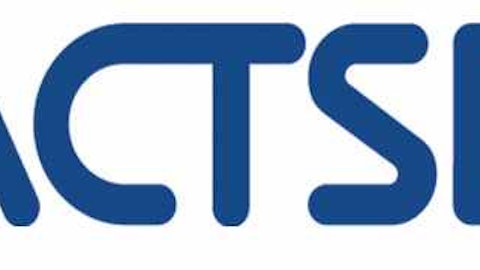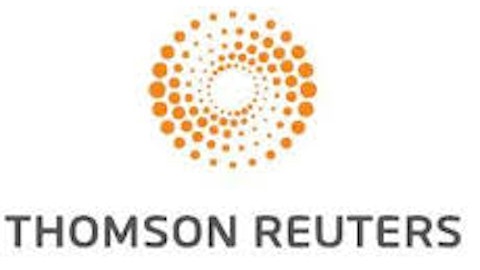Thomson Reuters Corp (NYSE:TRI) has raised its dividend for 22 straight years and is one of the most consistent free cash flow generators around. The company’s business benefits from significant amounts of recurring revenue (87% of sales).

While TRI’s rate of dividend growth is modest, we believe the company’s 3.6% dividend yield and current valuation are attractive. For these reasons and more, we hold TRI in our Conservative Retirees dividend portfolio.
However, the smart money investors that Insider Monkey follows, seem to be not very fond of the company. Just 12 funds, out of more than 730, held shares of Thomson Reuters at the end of September, down from 17 a quarter earlier. Moreover, these funds reported stakes equal to some 0.80% of the company in the latest round of 13F filings. However, Daniel Bubis’ Tetrem Capital Management, Cliff Asness’ AQR Capital Management, and Clint Carlson’s Carlson Capital own sizeable positions in Thomson Reuters as of the end of September.
Business Overview
TRI was created when Thomson acquired Reuters (a 160-year-old global news and financial data service) for about $17 billion in early 2008. Many of the company’s solutions were assembled through hundreds of acquisitions made over the years.
Today, TRI sells electronic content and services to professionals, primarily on a subscription basis. Its businesses provide solutions, software, and workflow tools which integrate its core data and information. Approximately 87% of TRI’s revenue is recurring, and 92% of its revenue is from information delivered electronically, software, and services.
By geography, TRI generated 60% of its 2014 sales from the Americas, 30% from Europe, the Middle East and Africa (EMEA), and 10% from Asia Pacific.
Segments
Financial & Risk (52% of 2014 revenue; 39% of operating profit): provides critical news, information and analytics, enables transactions and brings together financial communities that connect trading, investing, financial, and corporate professionals. It also provides regulatory and operational risk management solutions. This segment achieved its first year of sales growth since 2008 in 2014. It has faced declining demand from bank clients, as firms have decreased expenses and cut jobs since the financial crisis.
Legal (27% of sales; 39% of operating profit): provides critical online and print information, decision tools, software and services that support legal, investigation, business, and government professionals around the world.
Tax & Accounting (11% of sales; 12% of operating profit): provides integrated tax compliance and accounting information, software and services to professionals in accounting firms, corporations, law firms and government.
Intellectual Property & Science (8% of sales; 10% of operating profit): TRI is in the process of divesting this business to sharpen its focus. This segment provided information and tools that enable the lifecycle of innovation for governments, academia, publishers, corporations and law firms to discover, protect and commercialize new ideas and brands.
Business Analysis
Thinking big picture, one of the first things we like about TRI’s business is that professionals will always need more data and analysis. Knowing more about mission-critical topics (e.g. oil prices, geopolitical risks, currency movements, regulatory changes, etc.) helps people make better informed decisions, adapt to change, solve tough problems, and create successful outcomes.
TRI helps its customers accomplish these timeless objectives with its vast array of electronic content. As long as knowledge is valued by key decision-makers, there will be a need for TRI’s type of solutions.
Over many decades of operation, TRI has established a strong position of trust with its customers. The Thomson Reuters brand ranked #57 on the list of Best Global Brands and has helped the company maintain #1 or #2 market share positions in most of the segments that it serves. For example, over 85% of Fortune 500 companies use TRI’s legal research offerings.
TRI’s deep industry knowledge, proprietary databases, trusted reputation, and embeddedness in customers’ mission-critical workflows have all contributed to the company’s strength.
New entrants struggle to match the breadth of TRI’s enterprise solutions, which have been built up by hundreds of acquisitions over the last decade alone. Replicating TRI’s unique databases, tools, features, and platforms would be an extremely costly and time-consuming endeavor. TRI has even stated that it probably has more company data than any other corporation in the world.
Customer contracts serve as another barrier, although the majority of them are up for renewal every year. Despite the short contract arrangements, TRI’s existing customers would need to be willing to take a chance on a lesser-known vendor to part ways with TRI. Such a move could reasonably be deemed as “too risky” in many cases given the importance of customers’ workflows and decision-making that has relied on TRI’s solutions.
As a result of customers’ dependence on its solutions, TRI has generally enjoyed 2% price increases each year. The company’s continuously improving breadth, content, and capabilities help justify the price hikes and further strengthen long-term customer retention rates, which hover near 90% in its largest segment (Financial & Risk).





